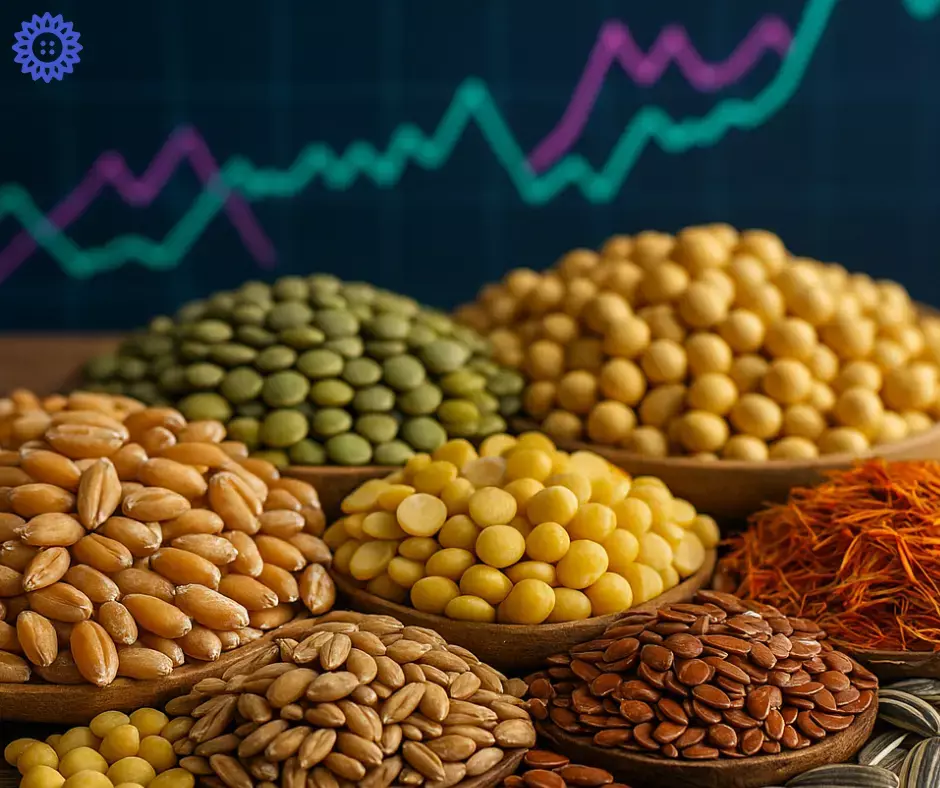15.04.2025, 09:32
What’s happening with grain and oilseed prices: analyst recommendations

With the start of the spring season in Kazakhstan, prices for several key agricultural crops are rising. The most notable price increases are seen in feed wheat, barley, flax, and soybeans. Analysts advise farmers to approach sales selectively, taking into account product quality and regional demand.
Grain
Prices for soft 3rd-class wheat with high gluten content (28%) remain volatile. Despite fluctuations, traders generally expect a moderate upward trend until the new harvest. Other wheat categories with lower gluten content (25% and 23%) are showing a stable upward dynamic. It is recommended to sell them gradually, especially if there are financial obligations.
Prices for feed-grade wheat (4th and 5th class) have also increased, indicating a growing interest in lower-quality grain. However, analysts suggest holding off on immediate sales as further price growth is possible.
Barley (2nd class) has strengthened in value as well. Still, experts recommend pausing sales — the market may be approaching a local peak.
Durum wheat prices remain stable. Given favorable export prospects, current sales are considered reasonable.
Oilseeds and Pulses
Among oilseeds, flax has shown the most significant weekly increase, supported by steady export demand. The recommendation is to hold off on sales and wait for a possible price increase.
Rapeseed is seeing moderate growth. Sales are acceptable if necessary, though logistical and currency factors should be considered.
Sunflower prices remain unchanged. Analysts suggest not rushing to market with large volumes.
Safflower is also stable, and its sale is deemed reasonable, as no short-term upward trend is expected.
Soy continues to gain value amid consistent demand. Analysts recommend selling in portions, targeting higher-margin deliveries.
Pulses have shown minimal price movement. Mustard, peas, and lentils remain within their previous price range, with recommendations to sell based on situational needs.
What does this mean for farmers?
Spring is a time for strategic decision-making. The market is sending positive signals, but a clear trend has yet to emerge. In this environment, planning sales carefully, optimizing logistics, and maintaining high product quality are key.
Forecasts of potential price ceilings and floors are subject to change and depend on ongoing market conditions.